
Full disclosure: I’m one of the contributing editors of Cinema Scope, the Canadian film magazine published and edited by Mark Peranson, whose experimental comedy La última película (co-directed by Raya Martin) is opening this week at the Film Society of Lincoln Center in New York. As this isn’t a review, I’ll withhold any critical commentary on the film, except to say that its creators have succeeded in doing something that most film writers have historically characterized as admirable: they’ve put their money where their mouths are. Shot in Mexico in late 2012 against the backdrop of the (retrospectively underwhelming) Mayan apocalypse, La última película has since circumnavigated the globe via film festivals; as its co-director is a seasoned world traveller, it seemed like a good idea to begin our interview by talking about the nomadic aspects of being a filmmaker on the circuit. Gradually, though, the interview conducted via Skype while Mark was on vacation, turned into a conversation about all of the different ways that making, watching and thinking about movies can be annoying. Not surprisingly, it went on for a while.
Adam Nayman: I wanted to start by asking you about what it’s like to take this film around to festivals, since most of your life is already spent going around to film festivals. How different is the experience on the other side of the Q and A, as it were?
Mark Peranson: I think that in terms of festival travel, the people who do it a lot are the people who are making their first second or third films. And, after a while, you notice that most filmmakers don’t do it if they aren’t required to do it for business purposes. Because it is very tiring, exhausting, and ultimately a lot of the time it isn’t very fulfilling. Maybe if you make a popular film, one that sells out its screenings, or something like that… but if you make a ‘small’ arty film, especially one that’s kind of confusing, immediately after you screen it the reactions tend to be nonplussed. I just showed our movie last week in Porto, where I was also on a jury; it’s a nice festival and a new festival, and it’s all documentaries. So I’m showing a movie that isn’t really a documentary at a documentary festival, which creates a certain amount of cognitive dissonance to begin with. There were maybe forty people in the audience, and everyone just walked out afterwards quietly with no discernible reaction. Later on, after people had some time to digest it, they had some comments, but the experience of showing a film and nobody saying anything is more typical. At least for me, especially with this film, which is, let’s face it, not a typical film.
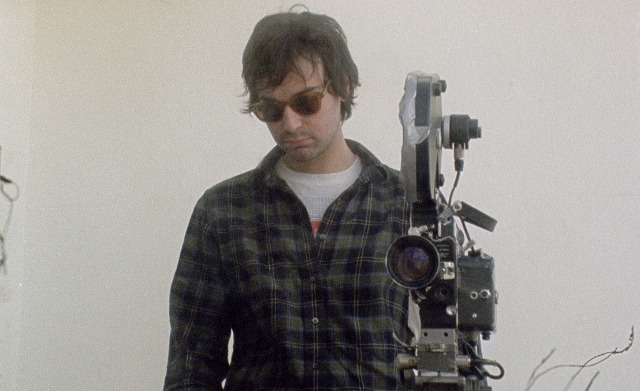
It’s a bit hard, though, to separate these screening experiences as a filmmaker from the fact that I have to be at a lot of these festivals anyway for my other job as a programmer. In New York, there’s no other reason to go except to show the film, and maybe for one of the last times. It’s an honor to be screening the film at Lincoln Center; I’d be lying if I said that when we were making it I would have thought that that would happen. And if the film does well in New York, and gets some more good reviews, hopefully other places will book it, as we don’t have a traditional release lined up. But far be it for me to have any idea how this business actually works.
Nayman: I do think that the film gains from being shown in a festival context; it’s a movie about cinema and that might appeal to people who are watching movies in a highly concentrated way.
Peranson: I can tell you that films about filmmaking rarely attract audiences, and fake films about filmmaking even less. I hoped that it would play more festivals, but I wasn’t that energetic about pushing it and we chose not to have a sales company for it. Maybe I’ve made some mistakes in that regard. The most important thing for us was that the movie be seen in theaters on 35mm. You could say that festivals are a necessity, but more than half of festivals showed it on DCP as they couldn’t screen 35mm anymore. Perhaps the best way to market a movie like this is as a sort of event thing. Not a big event thing, obviously. It remains rare today to have a new movie screened on 35mm. And it’s a different movie when projected on film as opposed to DCP, unquestionably.
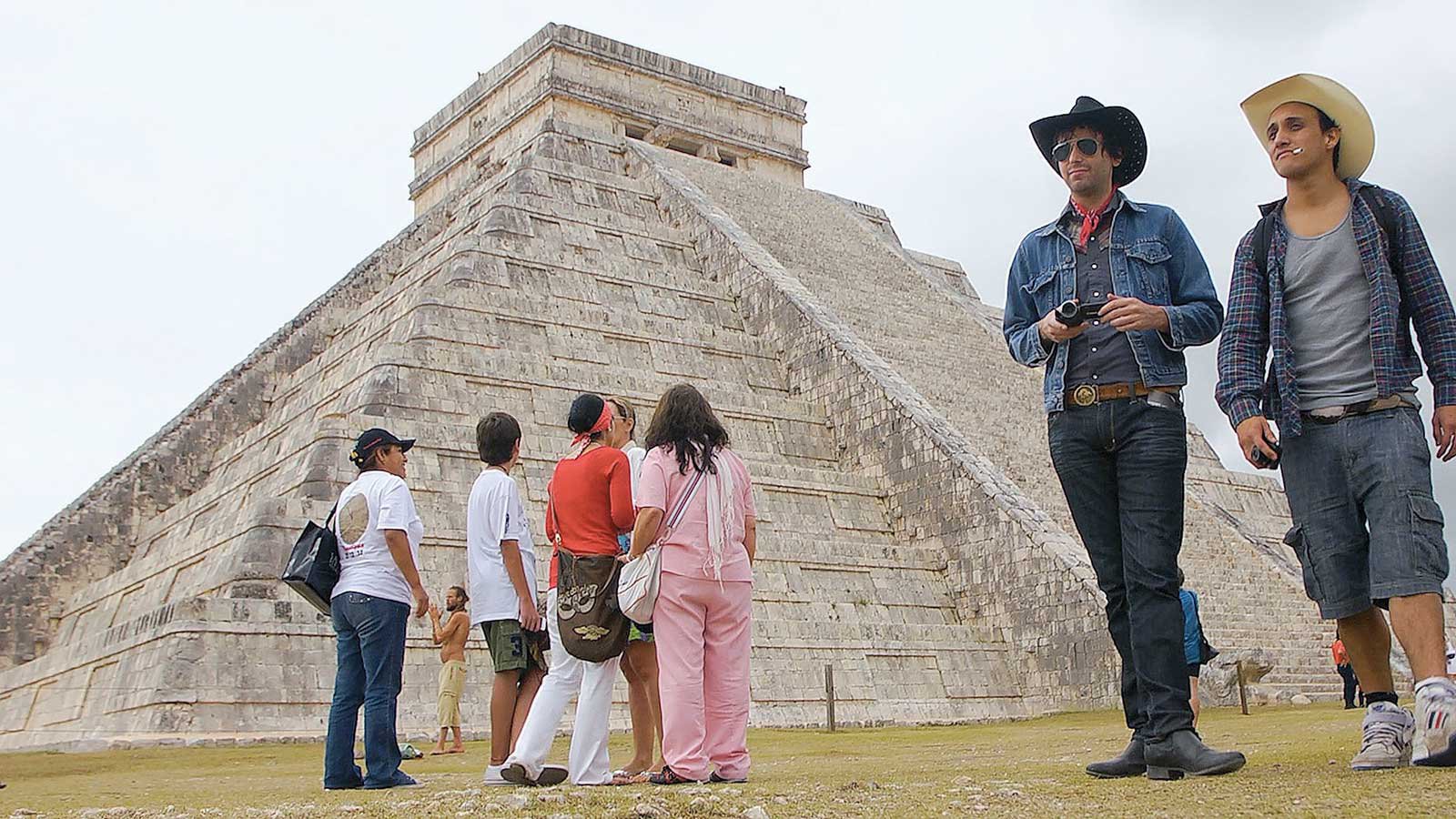
Nayman: When this question of film stock versus digital comes up in the media, it’s almost always in reference to movies at the more expensive end of the spectrum: everyone looks for quotes from Christopher Nolan about the purity of making movies in an old-school way. I wonder how that debate goes a little further down the line, in the world of what might be characterized as ‘festival cinema.’
Peranson: People shoot digitally. It’s how movies are made today. If you’ve never shot on film previously, then it would never cross your mind to try it, because digital is easier. More than half of La última película was shot digitally, by the way. Film is an option that exists, and sometimes it looks better; shooting on film and projecting on film are different issues to discuss, and when we made the film in 2012, projecting on film was still common practice, however hard that is to believe. Financially, the differences aren’t that major when it comes to shooting on film, though. I was having this discussion with two filmmakers, one of whom is very well established, and the other is younger, and he shoots his films on 16mm. The established filmmaker—it never crossed his mind to do that. The younger guy said he could afford it and that it just felt more natural to him than digital. All of Alex Ross Perry’s films, for example, have been shot on 16mm. Film still exists, but there are practical reasons that it might not stay that way—nobody to process it, a lack of labs…
Nayman: The thing about technology is that there’s always a tipping point: something is new and scary and then it’s orthodoxy. That’s also true of other kinds of progress, and the counter to that is that big moments of progress often come cloaked in apocalyptic rhetoric. La última película is very much about apocalypse, and it suggests that something about cinema has ended—that it’s the end of history. There’s a pessimism there.
Peranson: I wouldn’t say it’s un-hopeful. In terms of filmmaking, it opens up possibilities, and not just in terms of materials. There’s an ‘anything goes’ philosophy in there, a co-mingling of materials and forms: on set we were trying everything that came to mind. In a way one can relate this to the idea of the end of the Mayan long count, which New Agers bastardized into meaning the Apocalypse. The Mayan idea is that at the end of the calendar, there would be some process, some transformation, and that it would be for the good—not just how time was counted but some actual changes about life. So with film, you have the first hundred years of cinema as being on celluloid, and then there’s digital. We’re poised at this precipice, and it came pretty rapidly. This isn’t to say that our film is providing any answers or predicting anything, but it’s important that we not forget what film was like for those first hundred years. The real danger, not just in film, but in everything, is in losing contact with history. It’s true that technological advance often creates along with it a kind of nostalgia, a looking back at older forms; I suppose Miguel Gomes’ Tabu would be the most obvious in recent years. It’s true that Alex’s character is holding onto the past, and mourning the loss of something, but there’s a veil of irony over the whole project. So when he’s running off his mouth, you shouldn’t take what he’s saying as being entirely on the level. I don’t think you can charge Raya or myself with being nostalgic for early 1970s filmmaking, though, as neither of us were alive at the time.
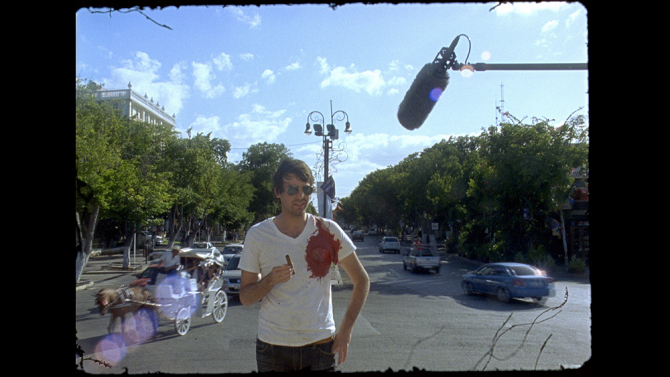
Nayman: You mention a veil of irony. There’s also a veil of cinephilia: there are so many references to other movies, and then there’s the fact that Raya Martin, Alex Ross Perry and Gabino Rodríguez all bring these associations with them from their own work, on top of which some of the people watching the film will know you as the editor of Cinema Scope, which is a deeply cinephilic magazine…
Peranson: That’s one level of the film. I think the film is strong enough to work without all that background knowledge, or if people don’t catch all the references that we’re making to all those other movies. Hopefully it can exist as a document—a fake document—of a filmmaker going to Mexico to make a movie of the Mayan apocalypse. Which is also of course what we were doing. If it doesn’t succeed on that level then it doesn’t succeed. A few people have compared it to postmodern literature, and that wasn’t what I was thinking about when we made it but I liked that, because I have a great respect for an audience, and don’t want to force feed people a narrative, and there’s always something at the heart of the best postmodern literature. It’s not just formal. It’s a very emotional movie for me, and for Raya also, and hopefully that comes across.
Nayman: You’ve talked in other interviews about the movie being a comedy, and in Cinema Scope you’ve expressed your preferences for comedies over boring movies. I remember one of your Cannes dispatches was about that exact thing; that funny movies trump boring ones any day of the week. To some extent, by making this movie a comedy, are you practicing what you preach as a critic?
Peranson: There’s also a veil of irony on the Cannes pieces. I would characterize both of my films [also Waiting for Sancho (2008), as ‘experimental comedies.’ That’s the genre I’m working in and not enough people do that. People either want to see comedies or they want to see experimental films, but they rarely want to see both at the same time. Comedy is a subjective thing, though. We wanted a movie that people laughed with and not at, but also in a non-traditional sense. It’s rare for me to enjoy myself when I watch certain kinds of movies these days; we wanted to make something that we would enjoy and that other people would enjoy. I think that it does help to see it more than once, because once you have the structure of the film, and once you understand that not all of the things that Alex is saying are meant to be taken seriously, it becomes a very different thing.
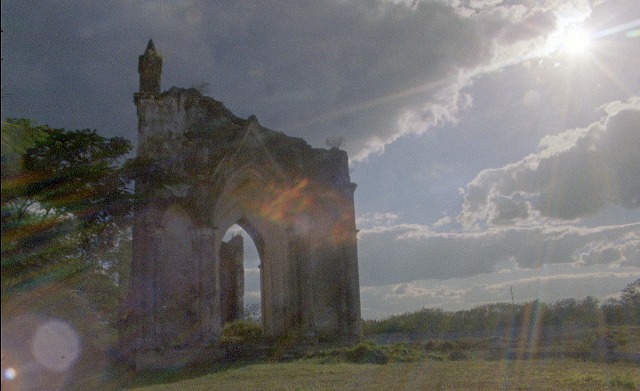
Nayman: I think that at the TIFF screening, there was a conversation afterwards about annoyance: the idea that a movie can productively be annoying. Or maybe it’s that a lot of the things that Alex says in the movie are annoying both because of how he says them and because they suggest things that some people—in the film and in the audience—might not want to hear about cinema, or filmmaking, or artistic endeavors in general. It can be liberating to be annoying.
Peranson: I find it unbelievable that somebody could watch this movie and not be annoyed at some point. The whole first reel of the film is kind of annoying. It’s sort of counterintuitive to say that the point of a movie could be that it’s annoying, and I don’t think people could be thinking that consciously while they’re making something—that the point of what they’re doing is to be annoying—but there is a philosophy of annoyance. Most films that are annoying are annoying against the wishes of their creators. They’re annoying for bad reasons. If you want to advance the theory that it’s good to be annoying, I support that, but not to the extent that the entire film is annoying. That’s taking it a bit too far.
Nayman: Now that you’ve made a feature-length comedy, would you agree with that old dictum that dying is easy and comedy is hard?
Peranson: If you’re making a film like this, the key is casting. We had a very minimal script. There was no dialogue written. The bulk of the lines and the jokes came from the actors. We discussed things but we didn’t write lines for them. One of the most staged scene was that one at the campfire, which we shot twice, and the first time was very different, and led to a certain amount of confusion as to the purpose of, well, the whole endeavor. Alex wanted something more concrete so I gave him the beats, taking off from his reactions, but all of their dialogue was improvised. So even though we had a structure on paper, a rough plan of how the film would ideally look, editing all of that together is not the easiest thing to do, no. You have to make a lot of choices, as opposed to picking the best take, so it’s probably a different experience than directing a proper comedic feature of course. Alex is really funny and smart, as is Gabino, so we figured that humor would develop a result of just having them there, as we encouraged them to go in that direction. There are things we didn’t expect, but that we were prepared for, like that conversation with the guy at the top of the pyramid in the first scene in the ruins. We considered having Alex go full-Borat and confront people in character, but it wasn’t in the nature of the film. It’s hard to keep all of the humor in the same register.
Nayman: There is a lot of post-Borat comedy out of there. On Facebook, somebody posted this YouTube video of Kyle Mooney from Saturday Night Live, in character and muttering incomprehensibly at other people attending a baseball game… it’s entirely about the fact that they just can’t understand him and how they choose to react (or not) react to him. It’s very annoying, and it’s pretty funny.
Peranson: I haven’t seen that, but it sounds pretty easy. I don’t think we make fun of people in the film, except for maybe when we make fun of Alex, or, rather, he makes fun of himself. In the scene in Chichen Itza, he’s making fun of the people around him but he’s also dressed in this ridiculous costume the whole time. I’m glad when people get that point, which to me is pretty obvious.
Nayman: On a scale of one to ten, how would you rate the experience of shooting a movie in Mexico on the eve of the apocalypse?
Peranson: As Dali supposedly said after visiting Mexico, ‘I will not go again to a country that is even more surreal than my paintings.’ There are good things about shooting in Mexico and there are bad things about shooting in Mexico. It’s very cheap. We could do what we wanted. We had a short time frame, though: we shot it in seven and a half days, driving between multiple locations, sometimes for hours. One of the cameras broke when we were shooting and it was pretty hard to find another 16mm camera in the Yucatan so we had to fly it in from Mexico City. If we’d been there ten years ago there probably would have been 16mm cameras everywhere. Now all the industrial production in the Yucatan is digital. But we didn’t have a choice: the movie couldn’t have been made anywhere else, really, for obvious reasons. The locations are very symbolic. When they’re on the beach in the darkness, that scene was shot at midnight on December 21, 2012, looking at the place where the meteor fell that supposedly killed the dinosaurs. We were in the city right next to the crater. Raya liked that, because he’s more into the cosmic than I am.
Nayman: Has Raya Martin talked about the film as extensively as you have?
Peranson: It seems to have fallen to me. He showed the film a couple of times in the Philippines and was also in New York for Art of the Real last year. He’s shooting next month so he’s been working on other things. We worked on the film for a long time together and there were only some small things that we disagreed on. It’s not an easy thing to make a movie with two directors. A film like this can’t be perfect, and maybe it should be annoying at times, because it’s coming from two different minds. It hit me at some point that it made sense having two directors on a movie where imperfection is interwoven into the fabric of the film. People have tried to break it down to us and say ‘this part of the film is Raya’ and ‘this part of the film is Mark’ and the fact is that they often have it backwards.
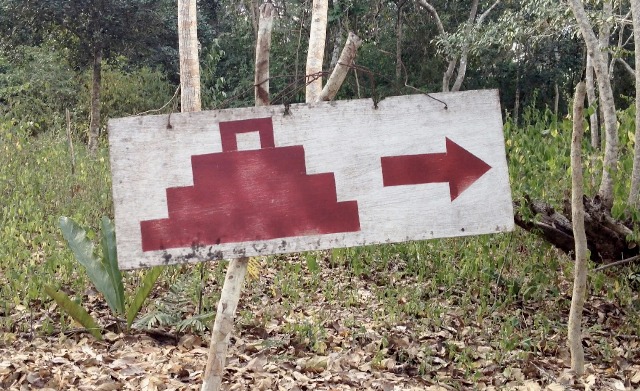
Nayman: I thought when I saw it that there was something nice and symmetrical about the fact that you had these two sort of mismatched characters as avatars for you and Raya…
Peranson: When I started editing the film I saw that there was a parallel between the two of us and the two of them. Not an exact parallel: Raya is not from Mexico. But the fact is that I agreed to work on the film because I was working with him, and he had made movies before, and he could guide me somewhat. I relied on him a lot. But he didn’t order my food.
Nayman: What’s the likelihood of you making another movie any time soon?
Peranson: I’m interested in doing it, but I have no plans. This came up very quickly. To make a movie in the traditional way takes a long time. You have to raise money. You have to go to labs and workshops and find a producer. We shot this movie without a producer. It would have been more difficult, in this case, with a producer. I’m still busy with this film, finishing it up. And I have two other jobs. If somebody came to me and asked me to do a making-of, I would consider it. That would be a possibility, if anybody wants to offer me an opportunity.

Nayman: Whose making-of do you want to shoot?
Peranson: In the whole wide world? It’d be interesting to do a making of a huge film. It’s inconceivable to me what it might be like to make a one hundred million dollar film. I guess now thanks to the Sony leaks we know that it’s three hundred million. I’d love to see first-hand how movies for that much money are made.
Nayman: And the making-ofs of those films are all very safely controlled—they’re produced as DVD supplements. The best films about filmmaking are all about troubled productions: Hearts of Darkness, Burden of Dreams. In fact that’d be a great cinematheque or festival program.
Peranson: Trust me. If somebody did a making-of on our film it would be like Burden of Dreams. It would have been Burden of Dreams level. A making-of of our movie would have been astounding. We have the footage—some of it’s online already. Maybe that’s something to do: a making-of of your own film.



